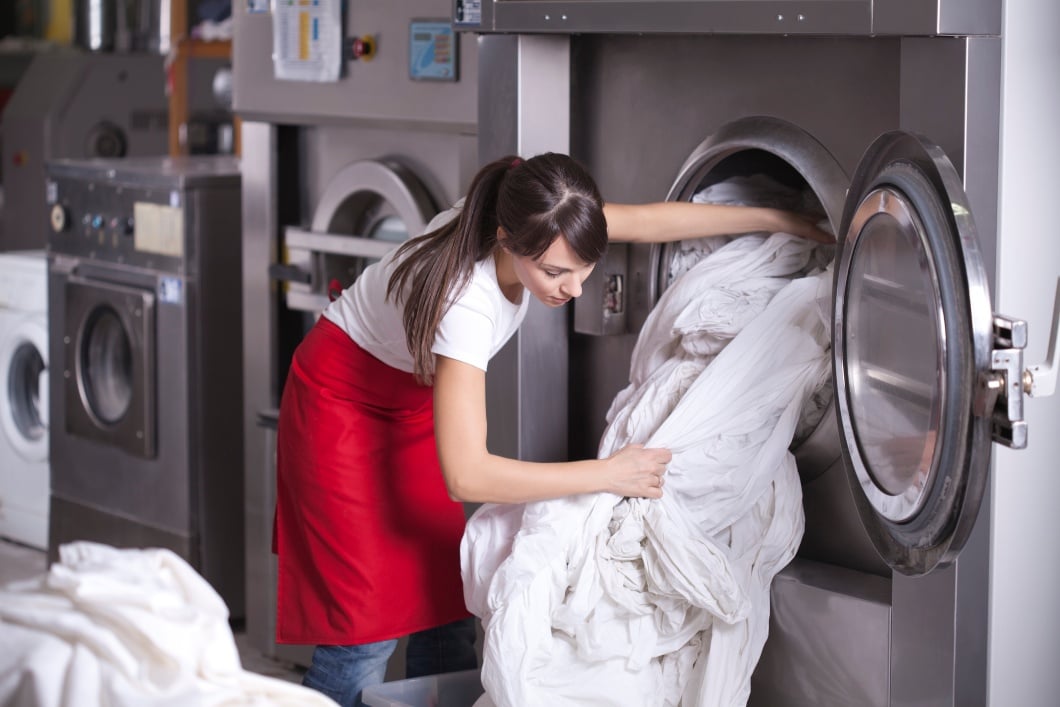As a laundromat or other on-site laundry business owner you know the importance of maintenance when it comes to employee and customer safety. Not cleaning dryer vents poses a severe fire hazard since the lint builds up and forces the machine to work harder and harder to achieve the same results. This often leads to overheating and the lint catching fire as a consequence.
Every year there are 2,900 dryer fires and $35 million worth of property damage caused by residential dryers. The dryer is the number one household appliance that catches fire in America. What’s more, the risk posed by dryer fires is much higher in a commercial environment due to the number of dryers and their proximity to each other.
So, how often should you be cleaning your dryer vents? How can you tell if they require cleaning? These are essential questions, and this article will aim to inform you about what you need to watch out for to protect yourself and others from the consequences of a dryer fire.
Signs Your Dryer Vents Need Cleaning
There are many signs that your dryer vents may need cleaning. The most apparent symptom is increased drying time. If you have to run your machines longer to achieve dry clothes, then it is likely that your vents have become clogged and need cleaning.
Another tell-tale sign that it’s time to take action is when the dryer becomes unusually hot. A dryer is always going to be warm during operation, but it should not get to the point where you can physically notice how much hot air is emanating from the dryer or feel that your customers’ clothes come out extra hot.
Finally, it is often the case that you can smell burning if the lint buildup is particularly bad. As previously mentioned, lint is incredibly flammable so if it’s caught around the hose or exhaust (which causes the smell of burning) then stop the machine, and call a professional to take a look.
How Are Clean Commercial Dryer Vents Cleaned?
Cleaning commercial dryer vents is best left to the professionals. Once you realize you need to have your vents cleaned, it’s best practice to call specialist contractors who have experience with un-clogging commercial equipment of this nature.
Professional cleaners will inspect your vents and pipework to see if there are any immediate areas of concern that need to be addressed first. Once the infrastructure surrounding the dryer(s) in question has been deemed safe, they will get to work using their specialist cleaning tools.
After a visual inspection of all dryer vent and ductwork has been done, they will begin the process of removing lint accumulations and any other debris. Once that buildup of materials have been removed, the specialists will move to deep cleaning all ductwork and filters before handing over a report of the works carried out.
How Often Should You Get Your Commercial Dryer Vents Cleaned?
Commercial dryers are much larger than their residential counterparts and therefore do not need to to have their vents cleaned as regularly. At average usage levels, you would expect to have your dryer vents cleaned approximately every 3-5 years.
However, many laundromat owners often opt for a more regular cleaning routine to keep their margins at optimal levels. Since investing in a commercial dryer represents a significant upfront cost, it makes sense to keep them running at optimum capacity to maintain healthy profits.
The buildup of even a relatively small amount of lint puts a significant amount of extra strain on the machine to expel the damp and lint-filled air through its exhaust. This leads to longer run times, increased energy bills and ultimately reduced profits for business owners.
So not only are you well served to regularly clean your dryer vents to reduce the risk of a potentially business-destroying fire, but you will also reap the monetary rewards of a more efficient machine.








